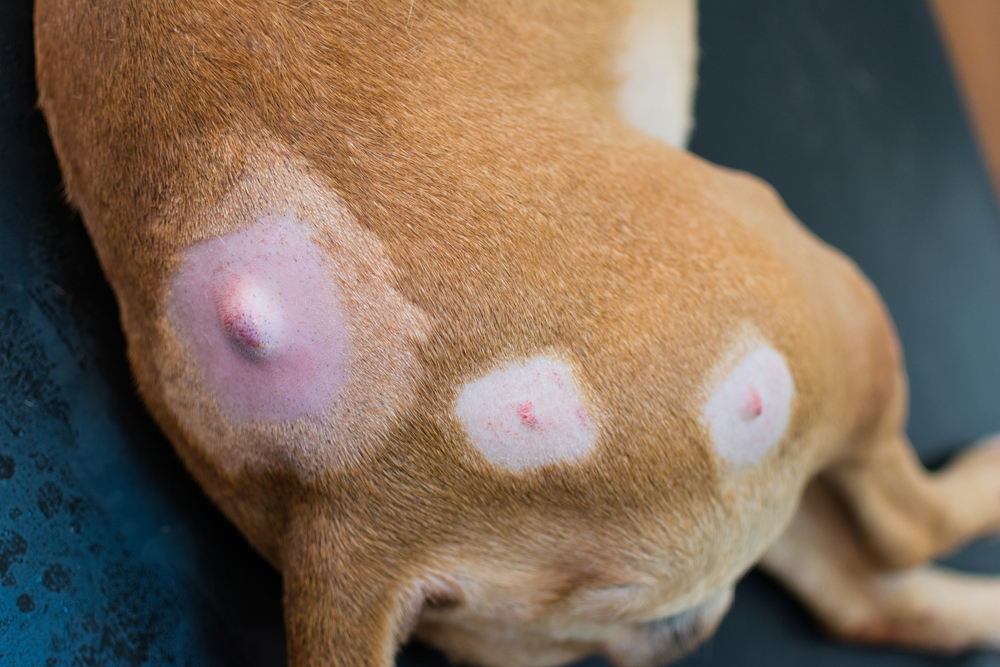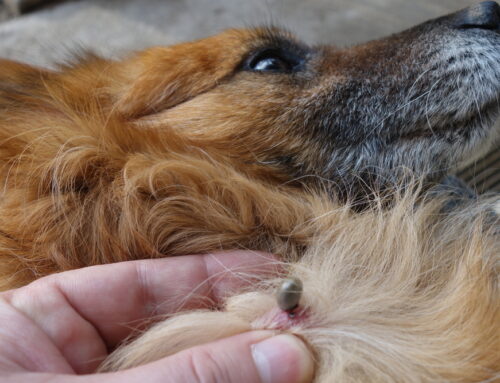From Harmless to Harmful: When Lumps Require Urgent Care
That new bump under your pet’s skin could be anything from a fatty deposit to a serious tumor. While many are benign, sudden changes or signs of discomfort demand immediate attention. Early evaluation helps ensure peace of mind- and better outcomes if treatment is needed.
At Star of Texas Veterinary Hospital, our compassionate team uses advanced diagnostics to identify what’s causing that lump and create a treatment plan tailored to your pet’s needs. Whether it’s cytology, biopsy, or imaging, we provide answers without adding stress to you or your pet.
Why Veterinary Evaluation Matters for Every Lump
Not all lumps are dangerous, but only a veterinarian can determine what’s behind them. Some masses are harmless fatty deposits that require nothing more than monitoring. Others signal infection, inflammation, or cancer requiring immediate intervention.
The challenge is that many lumps look identical to the untouched eye. A soft, movable mass could be a benign lipoma or an aggressive mast cell tumor. A firm nodule might be scar tissue or a malignant growth. Without proper testing, there’s no way to know.
Types of cancer in pets range from slow-growing tumors to aggressive malignancies, and early diagnosis dramatically improves outcomes. Waiting to “see what happens” can allow treatable conditions to become advanced problems.
We encourage pet owners to conduct routine lump checks during grooming or cuddling. Run your hands over your pet’s body regularly, feeling for anything new or unusual. If you can feel it, we should see it.
Common Skin Masses: What They Could Mean
Many lumps share similar appearances but have vastly different causes. Understanding the possibilities helps you recognize when something needs attention and what questions to ask your veterinarian.
Benign Growths That Still Deserve Monitoring
Some masses are non-cancerous but still worth tracking over time. These growths rarely cause harm, though removal may be recommended if they interfere with movement or quality of life.
Lipomas are soft, movable fatty tumors common in older dogs. Lipomas in dogs typically grow slowly and feel doughy under the skin. While benign, large lipomas can restrict mobility or become uncomfortable.
Warts, or papillomas, appear as small, cauliflower-like growths around the mouth or face. Oral papilloma virus in dogs spreads through direct contact and most commonly affects young dogs. These viral growths usually resolve on their own within a few months.
Calluses develop over pressure points like elbows and hocks, especially in large-breed dogs. Dog elbow callus formation results from repeated contact with hard surfaces and can thicken over time, sometimes cracking or becoming infected.
Hematomas are blood-filled swellings caused by trauma, most often seen on ear flaps after head shaking. Ear hematoma in dogs requires drainage and treatment of the underlying cause, such as ear infections or allergies.
Hernias create soft bulges near the abdomen or groin where tissue pushes through a weakened muscle wall. Hernias in dogs and cats may be congenital or develop after trauma and often require surgical repair to prevent complications.
Infections and Inflammatory Lumps
Not all masses are tumors. Some result from infection or immune response and require different treatment approaches than growths.
Abscesses are painful, pus-filled pockets caused by bites, punctures, or foreign material. Cat abscess symptoms include fever, lethargy, and a hot, swollen area that may rupture and drain. Treatment involves drainage, flushing, and antibiotics.
Allergic hives appear as raised welts across the skin following exposure to an allergen. Hives due to allergies in dogs can develop suddenly after insect stings, medications, or food reactions and usually resolve quickly with antihistamines.
Anal sac infections cause swelling near the tail that owners sometimes mistake for tumors. Anal sac diseases in dogs lead to scooting, licking, and discomfort during bowel movements. It’s important to note that anal sac tumors can occur, so getting them checking out is critical.
Interdigital furunculosis creates painful nodules between the toes caused by infection, trauma, or foreign bodies. Interdigital furunculosis requires aggressive treatment including antibiotics, anti-inflammatories, and sometimes surgery to prevent recurrence.
Foxtail foreign bodies are plant awns that burrow into skin, creating abscess-like swellings. Foxtails and their risks to pets can migrate through tissue and cause serious infections if not removed promptly.
Cancerous and Malignant Tumors
Some lumps are cancerous, and early detection dramatically improves treatment success. Malignant masses often grow quickly, ulcerate, or feel firm and irregular, but some cancers appear deceptively harmless.
Signs of cancer in pets include lumps that change rapidly, wounds that won’t heal, and unexplained weight loss. However, many cancers develop silently, making routine screening essential.
Common skin cancers in dogs include mast cell tumors, melanomas, and squamous cell carcinomas. These tumors vary in appearance and behavior, with some remaining localized and others spreading aggressively.
Squamous cell cancer in cats frequently develops on sun-exposed areas like ear tips and noses, particularly in white cats. Early surgical removal offers the best chance of cure.
Osteosarcoma in dogs is an aggressive bone cancer that causes limb swelling and lameness. While it most commonly affects the skeleton, soft tissue variants can appear as skin masses.
Oral tumors of small animals include melanomas, squamous cell carcinomas, and fibrosarcomas. These cancers cause bad breath, difficulty eating, and facial swelling if left untreated.
The Veterinary Cancer Society pet owner resources provide education and support for families navigating cancer diagnoses, offering guidance on treatment options and quality of life decisions.
How Veterinarians Identify What’s Causing a Lump
Appearance alone cannot determine whether a mass is benign or malignant. Even experienced veterinarians cannot diagnose a lump by sight or touch. Lab testing remains the only reliable way to know what you’re dealing with.
During a physical exam, your veterinarian assesses location, size, shape, texture, and mobility. These characteristics provide clues but not definitive answers.
Cytology, or fine needle aspiration, samples cells from the lump for microscopic analysis. Small animal skin cytology helps identify infection, inflammation, or cancer quickly and with minimal discomfort. This procedure can often be performed during a regular appointment without sedation.
Biopsy involves surgical removal of tissue for detailed histopathology. This provides the most accurate diagnosis and determines whether the entire mass was removed or if additional surgery is needed.
Imaging such as X-rays or ultrasound evaluates whether deeper structures are affected or if the cancer has spread. These tools help stage disease and guide treatment planning.
At Star of Texas, we perform diagnostics using Fear Free techniques that minimize anxiety. For pets who need extra support, we offer Pre-Visit Pharmaceuticals (PVPs) to reduce stress before arriving at the clinic.
Red Flags That Require Immediate Attention
Certain characteristics signal that a lump needs urgent evaluation. Contact your veterinarian if you notice any of the following:
- Any new lump that appears suddenly
- Masses that grow rapidly or change color, shape, or texture
- Lumps that bleed, ooze, ulcerate, or won’t heal
- Painful or firm masses
- Growths that return after removal
- Multiple lumps appearing simultaneously
During routine skin checks, remember that ticks can mimic small lumps. Preventing ticks on pets through year-round parasite prevention reduces confusion and protects against tick-borne diseases.
If you can feel it, we should see it. Even if a lump turns out to be harmless, early evaluation provides peace of mind and establishes a baseline for future monitoring.
Treatment Options Based on Diagnosis
Treatment depends entirely on what’s causing the lump. Benign growths may simply be monitored or removed for comfort if they interfere with movement or quality of life.
Infections and abscesses require drainage and antibiotic therapy. Most pets recover quickly once the infection is addressed.
Cancers may require surgery, chemotherapy, radiation, or a combination of approaches. Modern veterinary oncology offers excellent outcomes for many cancers when caught early.
At Star of Texas, our comprehensive services include soft tissue surgery, advanced procedures through our mobile surgeon, and integrative therapies like acupuncture to support healing and comfort.
Preventing Future Problems Through Proactive Care
While not all lumps are preventable, routine monitoring and preventive care catch changes early when treatment is simplest.
Conduct regular home body checks while grooming or petting your pet. Run your hands over their entire body, feeling for anything new or unusual. Note any changes in existing lumps.
Keep pets on year-round parasite prevention to reduce tick exposure and prevent infections from bites or scratches.
Schedule routine wellness exams so your veterinarian can track changes over time and catch problems before they become serious. Regular visits establish baseline health and build trust, making future care easier.

Your Next Steps for Peace of Mind
Not all lumps are dangerous, but every lump deserves professional evaluation. Early diagnosis prevents complications, simplifies treatment, and improves outcomes regardless of the cause.
If you’ve discovered a new mass or noticed changes in an existing one, don’t wait to see what happens. Request an appointment with our team for thorough evaluation and clear answers. You can also contact us with questions about your pet’s specific situation.
At Star of Texas Veterinary Hospital, we combine advanced diagnostics with compassionate, Fear Free care to identify the cause and guide the right next steps for your pet’s health.






